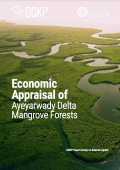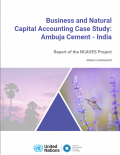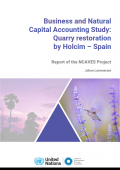
This case study demonstrates the importance of different Natural Capital Accounting (NCA) accounts for development planning, based on experiences from Uganda and other countries.

This report introduces Zambia’s new natural capital accounting system and in particular its recently established water, forest and land accounts
This assessment focused on the effects of interventions in Uzbekistan involving the use and consumption of target fruits, as well as of their marketing value, to improve household food security and well-being.

This insight brief serves to provide a comprehensive overview of the commercialization of nipa palm products and the production practices within the mangrove landscapes in the Ayeyarwady region of Myanmar.

This report showcases the results of piloting the 3Returns Framework in the coastal ecosystem restoration of mangrove forests in the Ayeyarwady Delta and how green growth alternatives can enhance the well-being of communities.

This case study examines alignment between the natural capital accounting approach of Ambuja Cement in India with the System of Environmental-Economic Accounting.

This case study examines alignment between the natural capital accounting approach of Holcim in Spain with the System of Environmental-Economic Accounting (SEEA), with a particular focus on biodiversity measurement for quarry restoration efforts.

This study utilizes an innovative integrated economic and environmental model (IEEM) coupled with land use land cover (LULC), and ecosystem service models (IEEM+ESM) to understand how various policy interventions could affect economic, poverty amelioration and environmental outcomes in Rwanda.
This is the third Environmental Performance Review of Ireland. Ireland’s progress in delinking the economy from environmental pressures has been uneven in the last decade. Encouraging businesses and households to take action is key.
Lao PDR policy makers have recognized the economic potential of protected areas and seek to develop these sites as a focus of the National Socio-Economic Development Plan 2021-2025 and the 2030 National Green Growth Strategy, given the globally unique natural heritage of Lao PDR.
